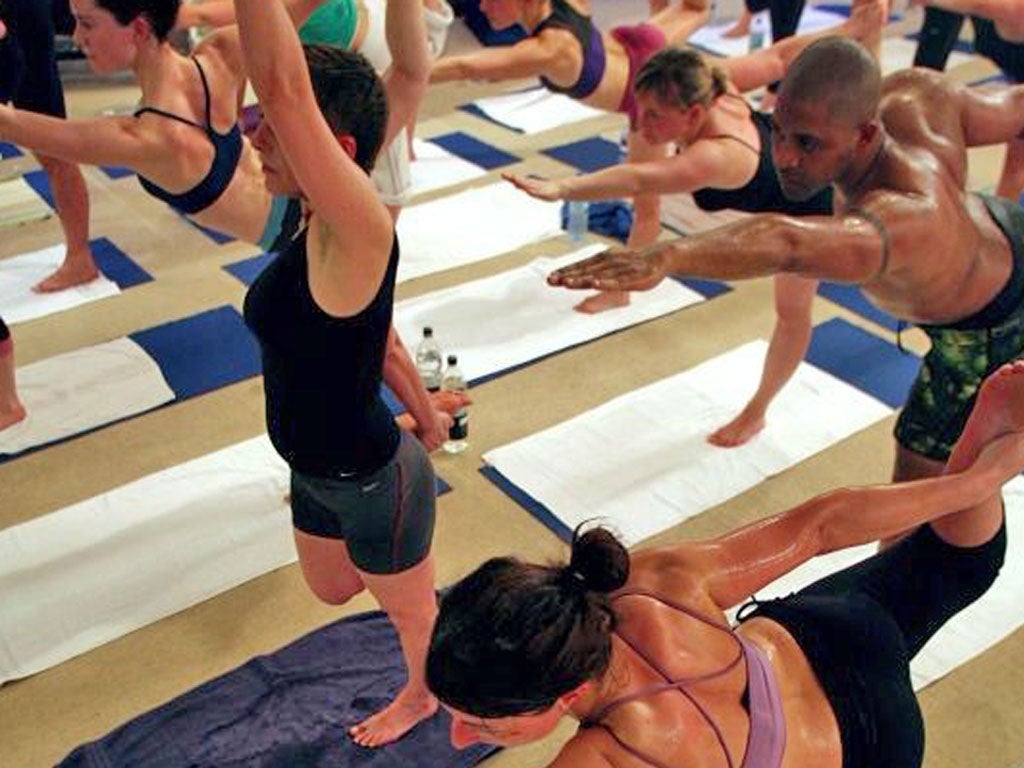I am a white meditation and yoga teacher, so am I guilty of cultural appropriation?
The evolution and exchange of ideas, styles and traditions is one of the joys of an interconnected, modern, multicultural society – but we still have to be respectful


Meditation is thought to date back over 5,000 years, with roots in Hinduism. I am a 42-year-old agnostic white woman, passionate about teaching meditation in a secular and engaging way. So am I doing the right thing? Or is this appreciation and adapting of an ancient cultural practice a form of appropriation?
There is evidence that most denominations and religions have used some form of meditation in their worship. However, the practice nowadays is probably most closely associated with Buddhism and the Buddha, who lived and taught in India about 2,600 years ago.
The English word “meditation” stems from “meditatum”, a Latin term meaning “to ponder” and, even as early as the 19th century, western interest in meditation began to grow. Over time, students travelled east to train under masters in India, Thailand, Burma and other Asian countries, bringing their interpretation and understanding of the practice back home to share.
Today there is an ever-growing body of scientific evidence which points out the many benefits of meditation and mindfulness on our physical and mental health. So how do we balance the respect of the cultural roots of the practice, while weaving it into everyday life? Who owns meditation? And is it OK if we borrow it, please?
I think most people would agree that no one “owns” meditation today. Much like British chefs cooking Thai-infused and inspired dishes, as long as we are respectful of, and acknowledge the roots of our practice, surely there is no problem?
As I write this, I feel nervous about the potential backlash I might receive given the sensitivities around the topic of cultural appropriation. But borrowing culture is how we got such treasures as pizza and mathematics. If we protect traditions and cultures like a listed building, do we preserve them, or are we in danger of killing them off? Since the beginning of time, the evolution and exchange of ideas, styles and traditions is one of the joys of an interconnected, modern, multicultural society.
I have been told by some that I am “whitewashing”, “diluting” and “disrespecting” traditional meditation roots, or that I am “not a proper meditation teacher”, despite spending hundreds of hours studying my own daily practice, and thousands of hours of teaching.
One of my meditation qualifications was in India, where we studied traditional texts and learnt chants and mantras for our meditation. It was wonderful to have this incredible experience, but I knew I would need to adapt this for my daily life, where I might be meditating parked in a supermarket car park or on a busy train or in my own home. I have developed and learnt techniques that worked for me, and which I would be able to teach to children as young as four or five.
The commercialisation of the word “mindful” or “mindfulness”, however, which has been labelled on everything from pants to colouring books, may be partly to blame. When we steal or appropriate a word and attach it to objects without relevance, this can be damaging and disrespectful.
I teach meditation from an anatomical, common-sense perspective, explaining the science and working of the brain and how meditation can help combat the fight-or-flight response, which is often stimulated and aroused in everyday situations in the modern world. Many of us are running on this heightened state throughout the day, often without realising it, and meditation can help reset and rebalance the body and mind, reducing stress with all the physical and mental benefits that might bring.
This year more than ever before, many of us are looking for ways to help our own physical or mental health, and also the wellbeing of our children and loved ones.
For me personally, meditation has saved my life and improved my own health, wellbeing and happiness beyond recognition. Throughout my teens and adulthood I navigated anxiety, panic attacks, postnatal depression, career burnout, the pain of a divorce last year, and the overwhelming grief of losing my mother during lockdown this year, all with increased resilience and the ability to process my emotions better. I believe this is because I meditate daily.
Five years ago, I left the corporate world and decided to retrain as a meditation and yoga teacher, mostly working with children. As a mother to a 12-year-old, I wanted to equip as many young people as possible with meditation skills to help regulate their emotions, understand their thoughts and feel a connection with who they are.
And yes I do use “loving kindness” meditations in the classroom, which stem from the Buddhist tradition, and I have used inspiration from Zen proverbs such as “when you eat, eat, when you walk, walk, when you breathe, breathe” to illustrate the importance of trying to focus on one thing at a time and do that completely. But that is not an appropriation of culture, it is seeking cultural inspiration, bringing it to life in the world in which I live today.
Lucy Stone is an accredited meditation and mindfulness teacher. She is the founder of Meditation Rocks – daily meditation videos for adults, schools and workplaces – The Hive Yoga Studio in Bath, and kids’ yoga brand YOGADOO
Join our commenting forum
Join thought-provoking conversations, follow other Independent readers and see their replies
Comments



Bookmark popover
Removed from bookmarks